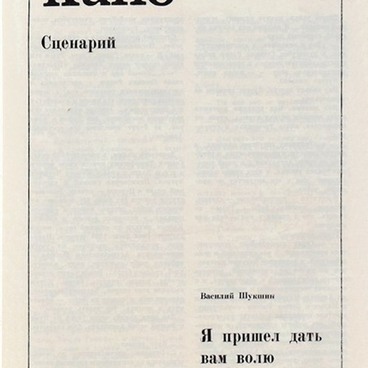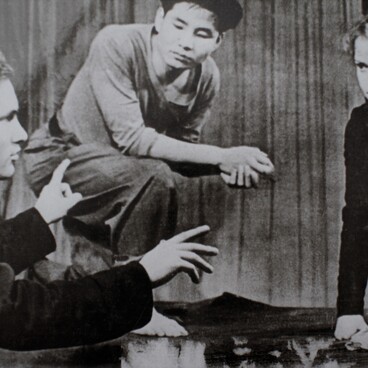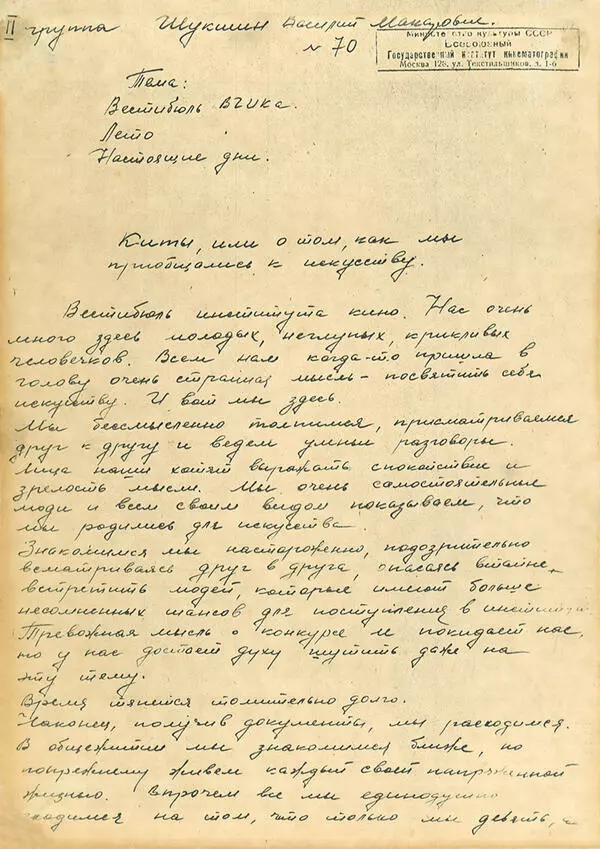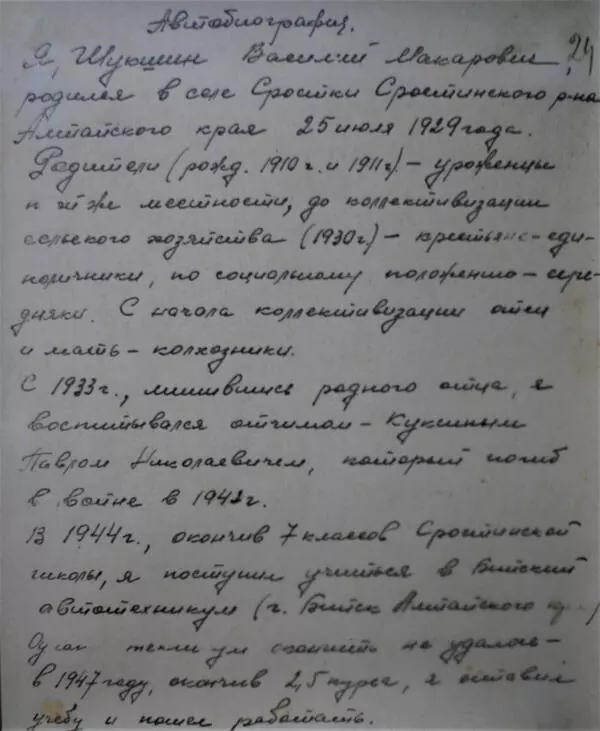Vasily Shukshin wrote the story Two on the cart while studying at VGIK. It was his first work to be published. In 1958–1959, the text was translated into Czech, Bulgarian, and Albanian.
Shukshin recounted that his teacher Mikhail Romm had taught the students writing skills as well as directing.
‘We didn’t simply study directing in Romm’s class. Mikhail Ilyich demanded that we tried to write ourselves. He sent us to various sites — a post office or a train station — and asked to describe what we saw. Then, he read and reviewed our sketches in class. He once gave me an advice: “Write, do not rush to send your works to an editorial office, but give them to me”. <…> Sometime near the end of the fourth — beginning of the fifth year he told me: “Send it to all editorial offices “en masse”. If you get your works back, just swap them and send again. That’s how I got started in my time’. And so I did’, Shukshin remembered.
Not only did Romm approve the publication, he also advised Shukshin to send his works to various editorial offices ‘en masse’, i.e. one or several manuscripts to every one of them. In case of refusal, Shukshin was to simply change the addressees. Shukshin approached the matter responsibly and even made a special schedule so as not to get confused. As a result, first positive response came from Smena magazine that agreed to publish Two on the Cart short story.
The lead characters of the story are a young paramedic Natasha and an elderly coachman, who went to the village of Berezovka for medical supplies. The weather was bad, it was raining, and the night was coming. Therefore, the coachman decided to wait until morning at a familiar beekeeper’s place. Natasha disagreed with this decision and objected to stopping, since patients were waiting for them in the village.
Shukshin did not like Two on a cart and considered it rather weak. Therefore, he never included it in his collections of works. In 2009, the text was published in the complete works of the writer. Readers were able to compare his early and subsequent work in order to note how quickly Shukshin the writer grew and developed artistically.
Shukshin recounted that his teacher Mikhail Romm had taught the students writing skills as well as directing.
‘We didn’t simply study directing in Romm’s class. Mikhail Ilyich demanded that we tried to write ourselves. He sent us to various sites — a post office or a train station — and asked to describe what we saw. Then, he read and reviewed our sketches in class. He once gave me an advice: “Write, do not rush to send your works to an editorial office, but give them to me”. <…> Sometime near the end of the fourth — beginning of the fifth year he told me: “Send it to all editorial offices “en masse”. If you get your works back, just swap them and send again. That’s how I got started in my time’. And so I did’, Shukshin remembered.
Not only did Romm approve the publication, he also advised Shukshin to send his works to various editorial offices ‘en masse’, i.e. one or several manuscripts to every one of them. In case of refusal, Shukshin was to simply change the addressees. Shukshin approached the matter responsibly and even made a special schedule so as not to get confused. As a result, first positive response came from Smena magazine that agreed to publish Two on the Cart short story.
The lead characters of the story are a young paramedic Natasha and an elderly coachman, who went to the village of Berezovka for medical supplies. The weather was bad, it was raining, and the night was coming. Therefore, the coachman decided to wait until morning at a familiar beekeeper’s place. Natasha disagreed with this decision and objected to stopping, since patients were waiting for them in the village.
Shukshin did not like Two on a cart and considered it rather weak. Therefore, he never included it in his collections of works. In 2009, the text was published in the complete works of the writer. Readers were able to compare his early and subsequent work in order to note how quickly Shukshin the writer grew and developed artistically.



